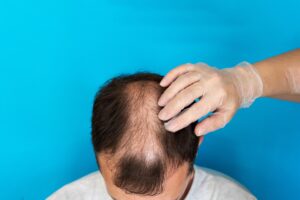 Have you heard of PRP to treat hair loss? This regenerative therapy is an exciting addition to our Tampa hair loss treatment options, and it’s helped numerous people regain confidence in their appearance.
Have you heard of PRP to treat hair loss? This regenerative therapy is an exciting addition to our Tampa hair loss treatment options, and it’s helped numerous people regain confidence in their appearance.
In this article, we’ll review everything you need to know about PRP therapy as an innovative hair loss solution.
How Does PRP Regrow Hair?
PRP stands for platelet-rich plasma. It’s a substance derived from the patient’s own blood, and it’s rich in healing growth factors. PRP stimulates tissue healing, so when it’s injected into the scalp, it can stimulate hair follicles and increase hair shaft thickness. The treatment process also increases blood circulation to the hair follicles, helping to further boost hair regrowth and prevent shedding.
Is PRP Safe?
PRP therapy involves drawing a small amount of blood from the patient and spinning that blood in a centrifuge to concentrate the platelet-rich plasma. Since it’s taken directly from the patient and doesn’t involve foreign substances, PRP is considered extremely safe. In avoiding foreign substances, PRP also negates the risk of allergic reactions.
How Long Does PRP Take to Work for Hair?
PRP takes time to stimulate dormant hair follicles and thicken existing hairs. So, it often takes three to six months to notice results from PRP hair treatment. Additionally, most patients need multiple sessions, spaced about a month apart, for the best possible results.
Is PRP for Hair Growth Invasive?
PRP is generally considered a minimally invasive treatment for hair loss. It involves a few simple injections, making it safer, quicker, and more convenient than hair transplant surgery. Additionally, PRP encourages your hair’s natural growth, leading to a more natural-looking result than many other hair loss treatments.
If you’re interested in PRP for hair loss in Tampa or St. Petersburg, a member of our experienced team would be happy to answer all of your questions. Book an appointment with us today!





 Main Menu
Main Menu